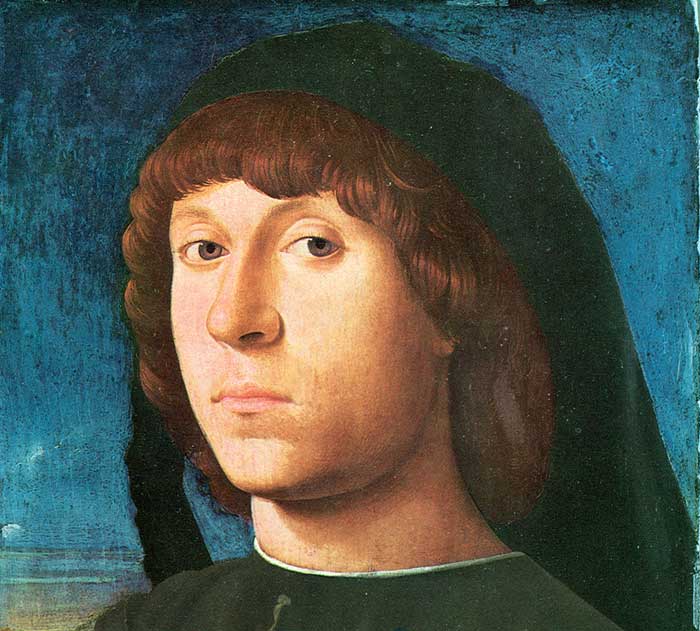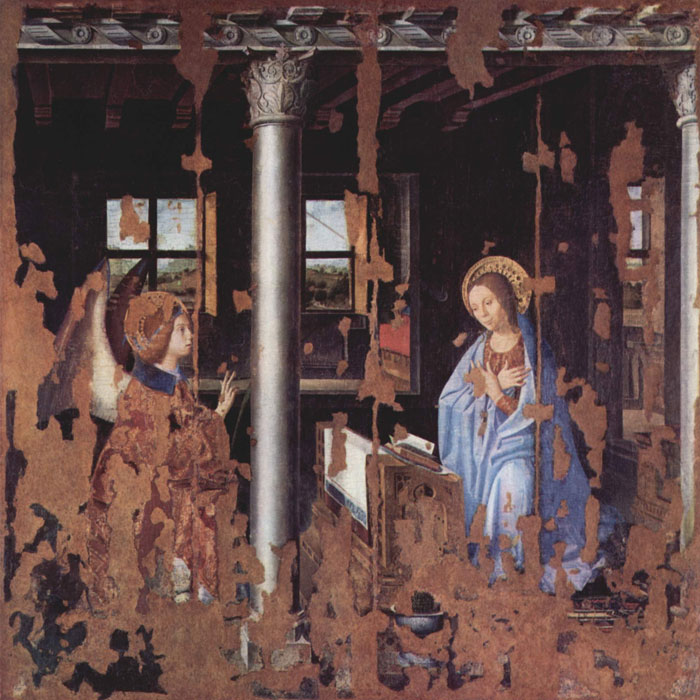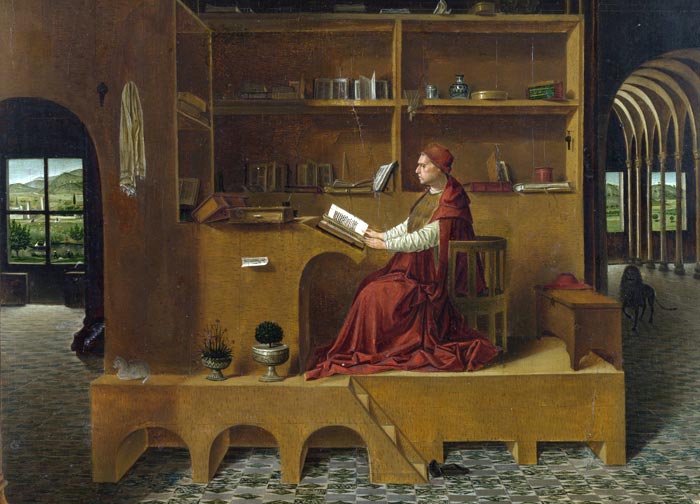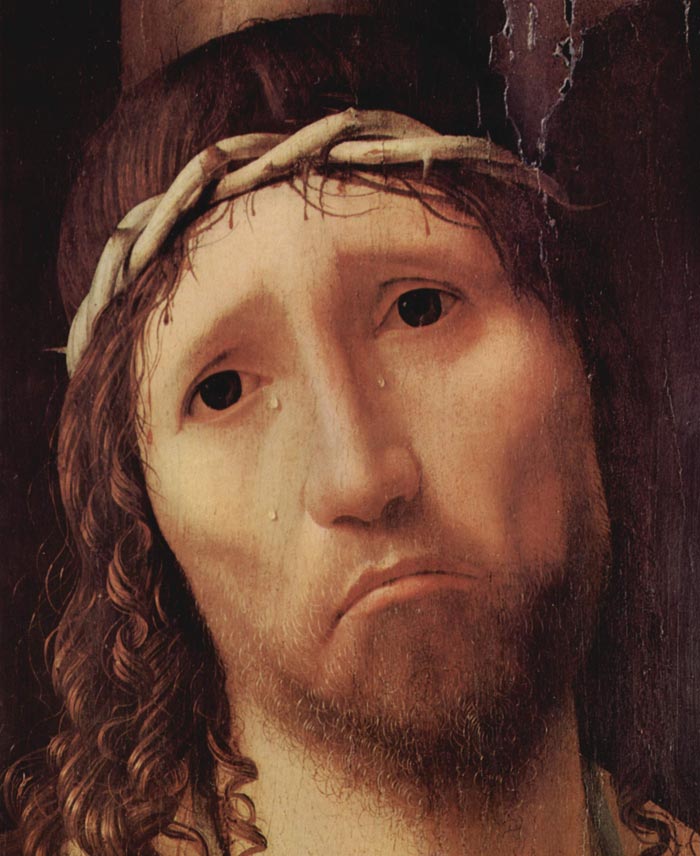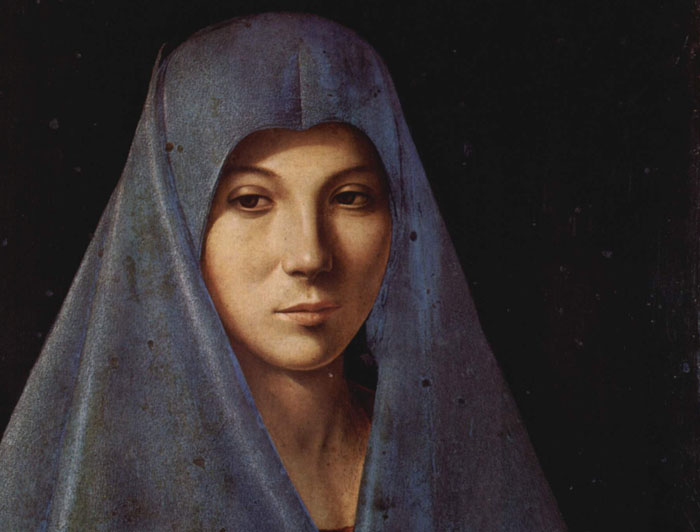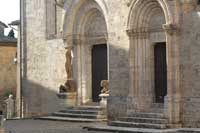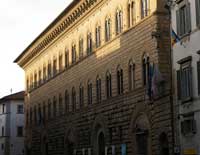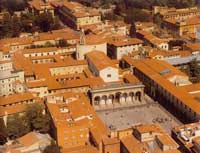Giorgio Vasari, Lives of the Artists | Antonello da Messina |
| When I consider within my own mind the various qualities of the benefits and advantages that have been conferred on the art of painting by many masters who have followed the second manner, I cannot do otherwise than call them, by reason of their efforts, truly industrious and excellent, because they sought above all to bring painting to a better condition, without thinking of discomfort, expense, or any particular interest of their own. They continued, then, to employ no other method of colouring save that of distemper for panels and for canvases, which method had been introduced by Cimabue in the year 1250, when he was working with those Greeks, and had been afterwards followed by Giotto and by the others of whom we have spoken up to the present; and they were still adhering to the same manner of working, although the craftsmen recognized clearly that pictures in distemper were wanting in a certain softness and liveliness, which, if they could be obtained, would be likely to give more grace to their designs, loveliness to their colouring, and greater facility in blending the colours together; for they had ever been wont to hatch their works merely with the point of the brush. But although many had made investigations and sought for something of the sort, yet no one had found any good method, either by the use of liquid varnish or by the mixture of other kinds of colours with the distemper. Among many who made trial of these and other similar
expedients, but all in vain, were Alesso Baldovinetti, Pesello, and many
others, not one of whom succeeded in giving to his works the beauty and
excellence that he had imagined. And even if they had found what they
were seeking, they still lacked the method of making their figures[Pg 60] on panel adhere as well as those painted on walls, and also that of making them so that they could be washed without destroying the colours, and would endure any shock in handling. These matters a great number of craftsmen had discussed many times in common, but without result. |
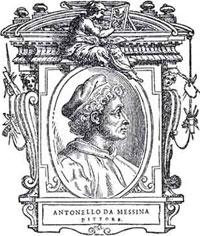 |
|
| This same desire was felt by many lofty minds that were devoted to painting beyond the bounds of Italy—namely, by all the painters of France, Spain, Germany, and other countries. Now, while matters stood thus, it came to pass that, while working in Flanders, Johann[10] of Bruges, a painter much esteemed in those parts by reason of the great mastery that he had acquired in his profession, set himself to make trial of various sorts of colours, and, as one who took delight in alchemy, to prepare many kinds of oil for making varnishes and other things dear to men of inventive brain, such as he was. Now, on one occasion, having taken very great pains with the painting of a panel, and having brought it to completion with much diligence, he gave it the varnish and put it to dry in the sun, as is the custom. But, either because the heat was too violent, or perchance because the wood was badly joined together or not seasoned well enough, the said panel opened out at the joinings in a ruinous fashion. Whereupon Johann, seeing the harm that the heat of the sun had done to it, determined to bring it about that the sun should never again do such great damage to his works. And so, being disgusted no less with his varnish than with working in distemper, he began to look for a method of making a varnish that should dry in the shade, without putting his pictures in the sun. Wherefore, after he had made many experiments with substances both pure and mixed together, he found at length that linseed oil and oil of nuts dried more readily than all the others that he had tried. These, then, boiled together with other mixtures of his, gave him the varnish that he—nay, all the painters in the world—had long desired. Afterwards, having made experiments with many other substances, he saw that mixing the colours with those oils gave them a very solid consistency, not only securing the work, when dried, from all danger from water, but also making the colour so brilliant as to give it lustre by itself without varnish; and what appeared most marvellous to him was this, that[Pg 61] it could be blended infinitely better than distemper. Rejoicing greatly over such a discovery, as was only reasonable, Johann made a beginning with many works and filled all those parts with them, with incredible pleasure for others and very great profit for himself; and, assisted by experience from day to day, he kept on ever making greater and better works. No long time passed before the fame of his invention, spreading not only throughout Flanders but through Italy and many other parts of the world, awakened in all craftsmen a very great desire to know by what method he gave so great a perfection to his works. These craftsmen, seeing his works and not knowing what means he employed, were forced to extol him and to give him immortal praise, and at the same time to envy him with a blameless envy, the rather as he refused for some time to allow himself to be seen at work by anyone, or to reveal his secret to any man. At length, however, having grown old, he imparted it to Roger of Bruges, his pupil, who passed it on to his disciple Ausse[11] and to the others whom we have mentioned in speaking of colouring in oil with regard to painting. But with all this, although merchants did a great business in his pictures and sent them all over the world to Princes and other great persons, to their own great profit, yet the knowledge did not spread beyond Flanders; and although these pictures had a very pungent odour, given to them by the mixture of colours and oils, particularly when they were new, so that it seemed possible for the secret to be found out, yet for many years it was not discovered. But certain Florentines, who traded between Flanders and Naples, sent to King Alfonso I of Naples a panel with many figures painted in oil by Johann, which became very dear to that King both for the beauty of the figures and for the novel invention shown in the colouring; and all the painters in that kingdom flocked together to see it, and it was consummately extolled by all. Now there was one Antonello da Messina, a person of good and lively intelligence, of great sagacity, and skilled in his profession, who, having studied design for many years in Rome, had first retired to[Pg 62] Palermo, where he had worked for many years, and finally to his native place, Messina, where he had confirmed by his works the good opinion that his countrymen had of his excellent ability in painting. This man, then, going once on some business of his own from Sicily to Naples, heard that the said King Alfonso had received from Flanders the aforesaid panel by the hand of Johann of Bruges, painted in oil in such a manner that it could be washed, would endure any shock, and was in every way perfect. Thereupon, having contrived to obtain a view of it, he was so strongly impressed by the liveliness of the colours and by the beauty and harmony of that painting, that he put on one side all other business and every thought and went off to Flanders. Having arrived in Bruges, he became very intimate with the said Johann, making him presents of many drawings in the Italian manner and other things, insomuch that the latter, moved by this and by the respect shown by Antonello, and being now old, was content that he should see his method of colouring in oil; wherefore Antonello did not depart from that place until he had gained a thorough knowledge of that way of colouring, which he desired so greatly to know. And no long time after, Johann having died, Antonello returned from Flanders in order to revisit his native country and to communicate to all Italy a secret so useful, beautiful, and advantageous. Then, having stayed a few months in Messina, he went to Venice, where, being a man much given to pleasure and very licentious, he resolved to take up his abode and finish his life, having found there a mode of living exactly suited to his taste. And so, putting himself to work, he made there many pictures in oil according to the rules that he had learned in Flanders; these are scattered throughout the houses of noblemen in that city, where they were held in great esteem by reason of the novelty of the work. He made many others, also, which were sent to various places. Finally, having acquired fame and great repute there, he was commissioned to paint a panel that was destined for S. Cassiano, a parish church in that city. This panel was wrought by Antonio with all his knowledge and with no sparing of time; and when finished, by reason of the novelty of the colouring and the beauty of the figures, which he had made with good design, it was much commended and held[Pg 63] in very great price. And afterwards, when men heard of the new secret that he had brought from Flanders to that city, he was ever loved and cherished by the magnificent noblemen of Venice throughout the whole course of his life.
|
||
Art in Tuscany | Giorgio Vasari | Lives of the Most Excellent Painters, Sculptors, and Architects |
||||
|
This article incorporates material from the Wikipedia article Antonello da Messina published under the GNU Free Documentation License.
|
||||
Holiday accomodation in Tuscany | Podere Santa Pia | Artist and writer's residency
|
||||
Podere Santa Pia |
Podere Santa Pia, garden view, April |
View from Podere Santa Pia
on the coast and Corsica |
||
Podere Santa Pia, garden view, December |
Piazza della Santissima Annunziata in Florence |
San Qurico d'Orcia |
||
Palazzo Medici Riccardi, Florence |
Piazza della Santissima Annunziata in Florence |
Florence, Duomo |
||

